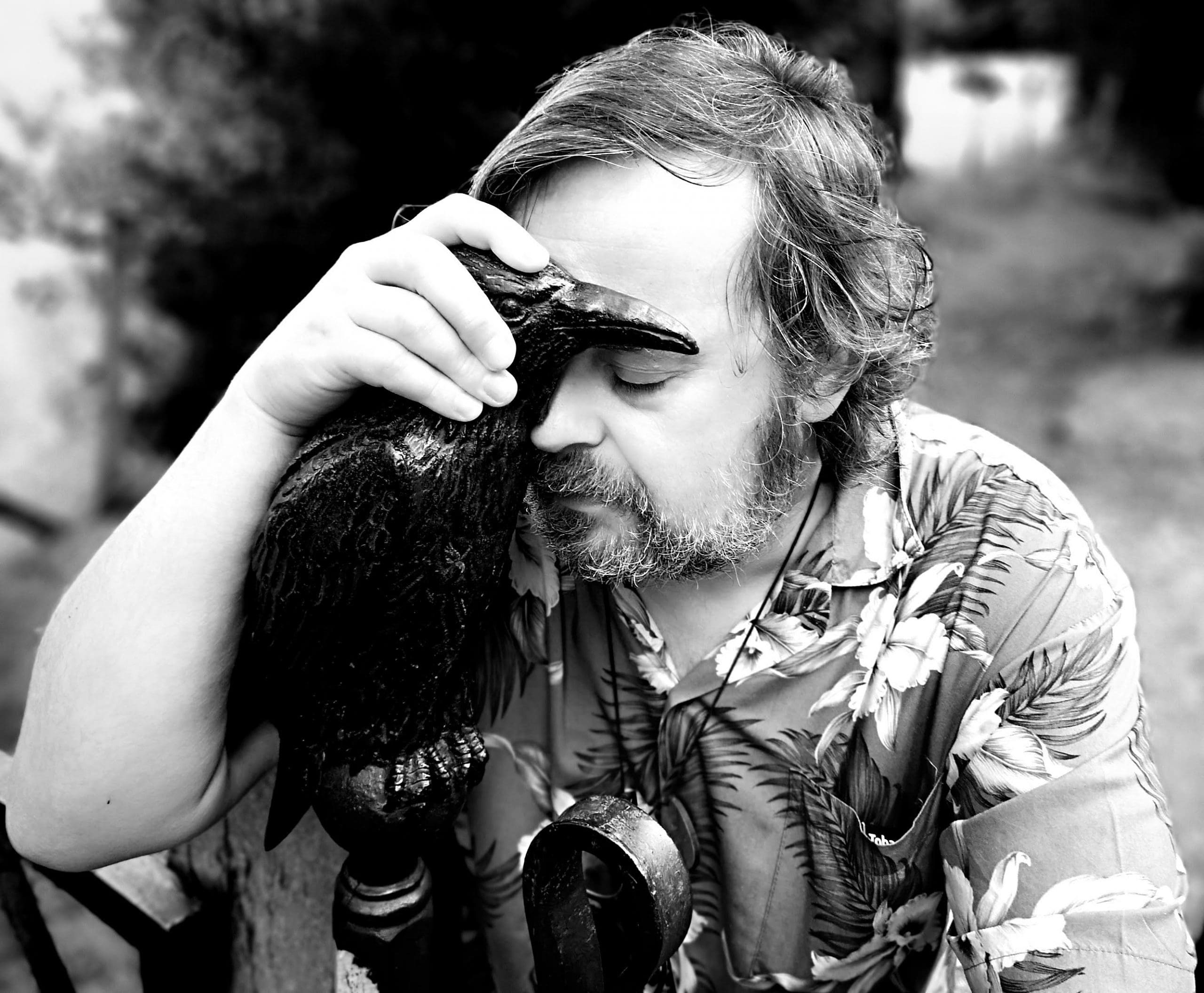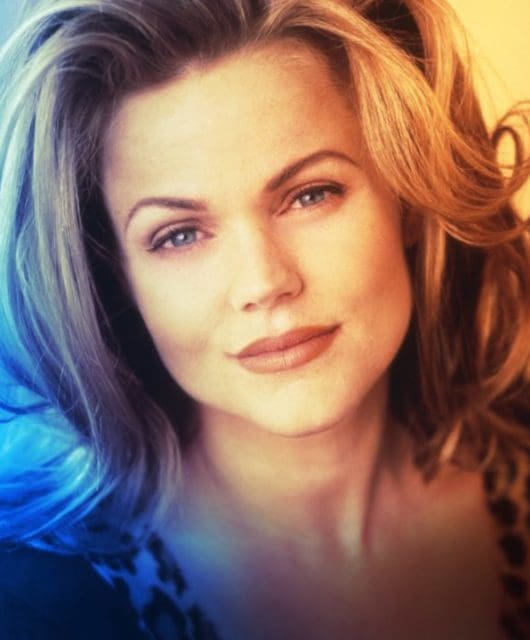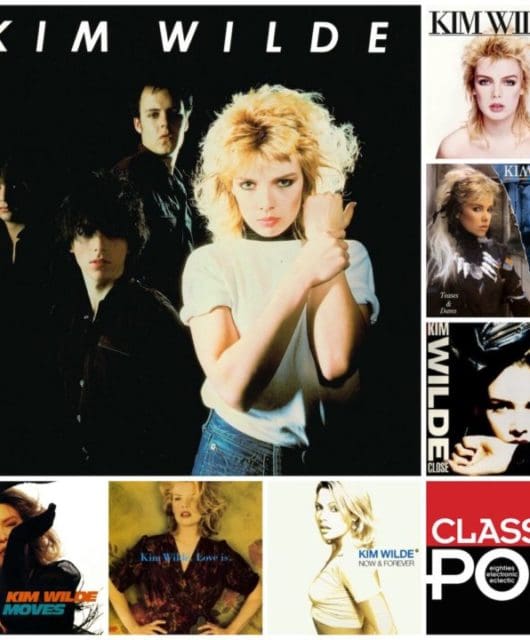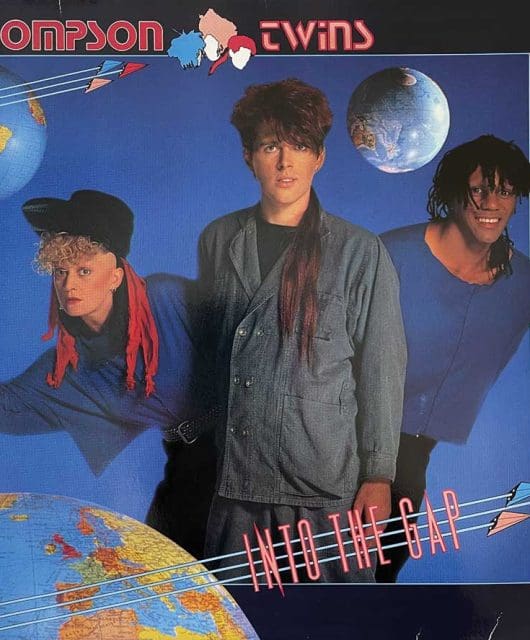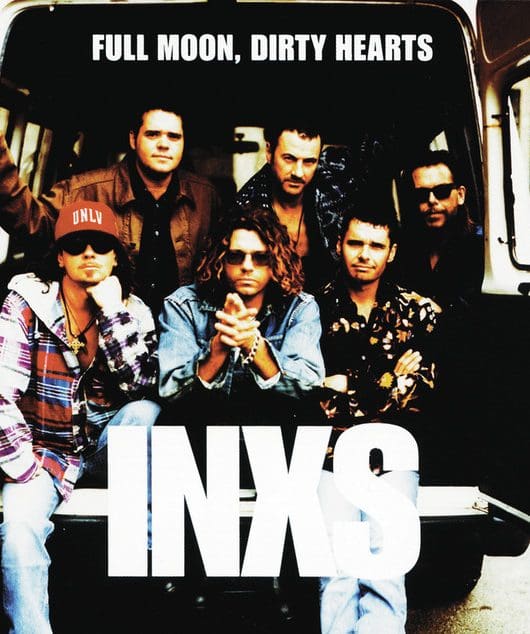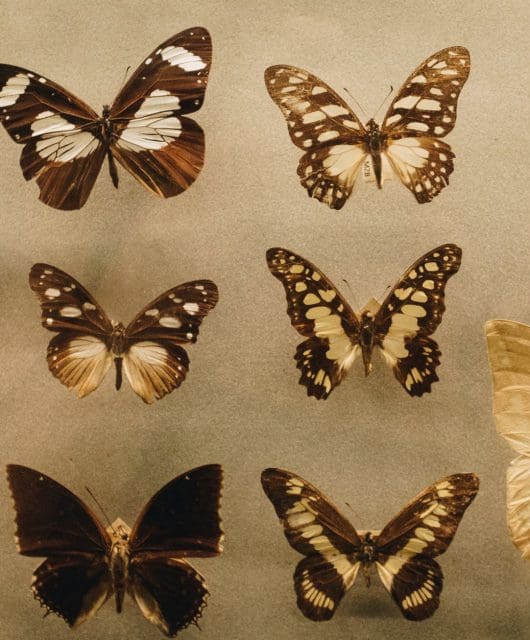David Sylvian albums – the complete guide
By Anthony Reynolds | December 21, 2021
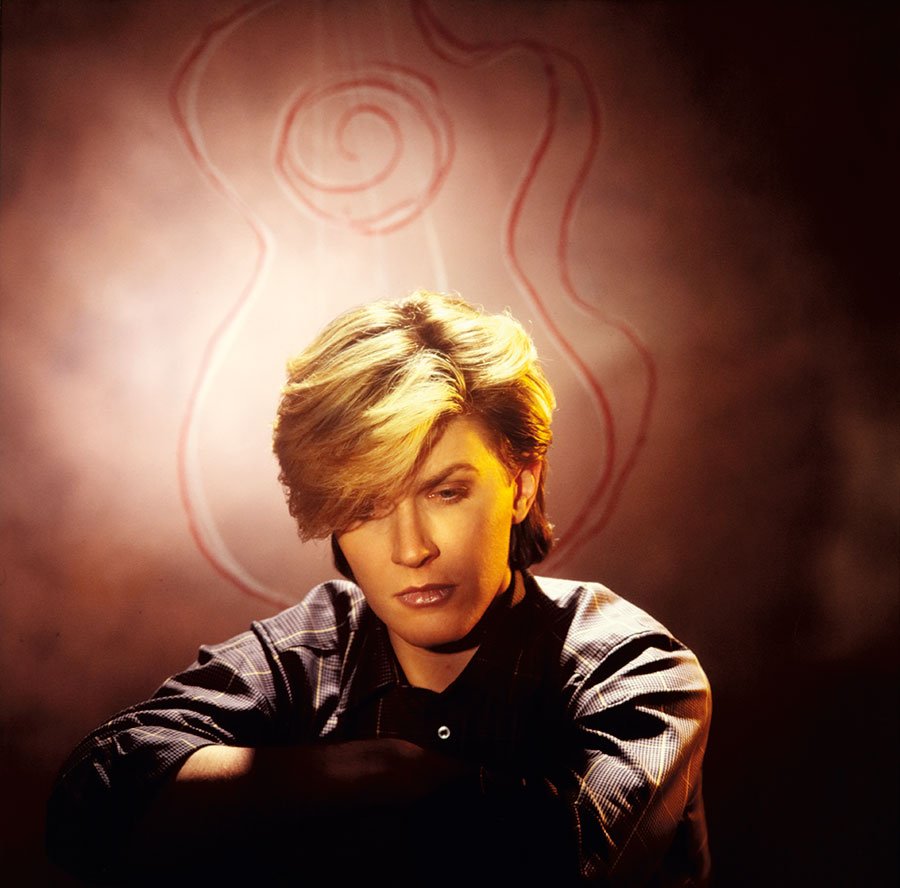
In a career spanning more than five decades, the albums of David Sylvian have encompassed pop, jazz, ambient and free improvisation…
BRILLIANT TREES, 1984
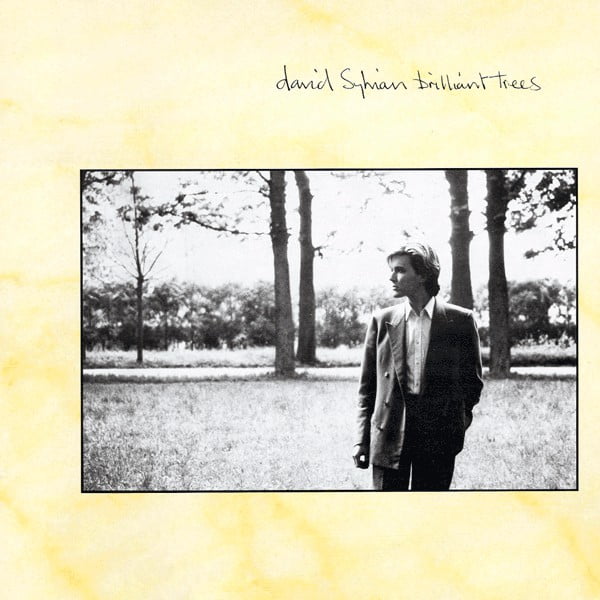
“I was fishing in the dark,” Sylvian has said of his debut solo album. “I didn’t know what was going to happen.” Released in June 1984 and peaking at No.4 on the UK Albums Chart, Sylvian obviously landed a prize catch. Recording had begun at Berlin’s Hansa studios in May 1983.
Sylvian was only 25 but already had five studio albums behind him, recorded with his alma mater, Japan. He was still young enough to appeal to the pop market yet experienced enough to hold his own in the studio with such leftfield music legends as Can’s Holger Czukay and trumpet player Jon Hassell. Indeed, the album utilises a cast of astonishing pedigree.
As well as featuring the aforementioned – both one-time students of German wunderkind composer Karlheinz Stockhausen – Sylvian employed Danny Thompson (Pentangle, John Martyn) on double bass, session legend Phil Palmer (Bowie, Scott Walker) on acoustic guitar, ex-Japan personnel Steve Jansen and Richard Barbieri on drums/percussion and keyboards respectively as well as Ryuichi Sakamoto on piano.
There was also the thrilling addition of NYC funk players Ronny Drayton on guitar and bassist Wayne Brathwaite.
The casting alone is genius. It’s hard to think of another early-80s pop pin-up having the sensibility to encompass such a broad range of top-tier and eclectic talent on an album. And in 1984, David Sylvian still was a proper pop star; his perfectly made-up and coiffured visage peering out from everything from Smash Hits to The Sunday Times.
Sylvian’s songwriting and voice had also found a new confidence; the album is a beautiful fusion of pop and jazz. Japan were deeply missed and much of their audience in mourning bought Brilliant Trees.
They found themselves listening to much more challenging material than usual, camouflaged as ‘pop music’. In a sense, Brilliant Trees was Sylvian saying, “Hello. I must be going”. Those who followed were richly rewarded. The album birthed two Top 40 singles in the UK, Red Guitar and The Ink In The Well, both accompanied by brilliant Anton Corbijn videos. And the album’s title? “It’s meant to appertain to the highest point human beings can reach,” explained Sylvian.
Read more: Top 40 New Romantic songs
Read more: Top 40 Synth-pop songs
ALCHEMY: AN INDEX OF POSSIBILITIES, 1985
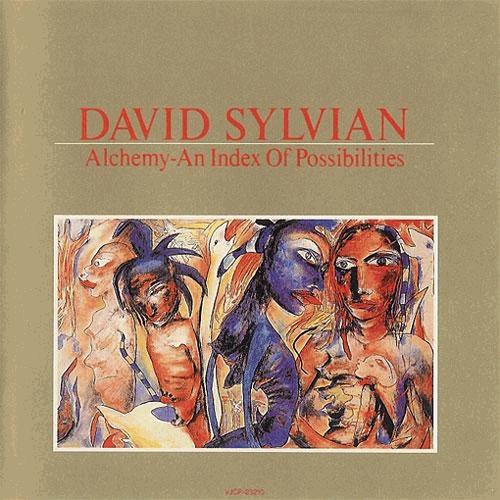
Sylvian had planned to collaborate with Ryuichi Sakamoto on an album as the follow-up to Brilliant Trees. When Sakamoto withdrew, Sylvian was temporarily at a loss. In the meantime, he accepted Paul Morley’s invitation to briefly help out Propaganda on their A Secret Wish album and joined Thomas Dolby for a quickly abandoned attempt at co-writing.
He also temporarily rekindled his relationship with one-time Japan support band Sandii & The Sunsetz by writing and performing on This Is Not Enough, a song that would turn up on their 1986 La La La La Love – Banzai Baby album. Additionally, by the end of ’84 he’d also completed a quixotic documentary in Japan; Preparations For A Journey which was released on VHS and Laserdisc in Japan in 1985.
This self-confessed “lazy person” had hardly been idle since the success of Brilliant Trees. And yet Alchemy… cannot truly be seen as an authentic sequel to Brilliant Trees. Indeed, Sylvian himself would refer to this purely instrumental work as a “footnote” to his debut album.
The track Steel Cathedrals was the first song to be started, in Tokyo with Sakamoto. Preparations For A Journey (the track) was also recorded in Japan before Sylvian returned to London where he worked on these and an additional three songs that would surface on the 12″-only EP Words With The Shamen.
Combined, these five pieces would be released in late-’85 as Alchemy…; a cassette-only album. Sylvian had requested copies of the master tracks from the Tokyo sessions to work on in London. When they arrived, the audio quality was so poor that he deemed the results worthy only of release on tape, a medium he deemed “more forgiving”.
Again, an all-star cast features, with Hassell, Jansen and Czukay being joined by Eno fretless bassist Percy Jones, acclaimed jazz trumpeter Kenny Wheeler and Robert Fripp. That these players trusted Sylvian enough to be directed by him speaks volumes. And so does the music. This is consummately convincing, whether it’s the deep throb and pulse foreboding of Steel Cathedrals or the rainforest funk of Incantation.
GONE TO EARTH, 1986
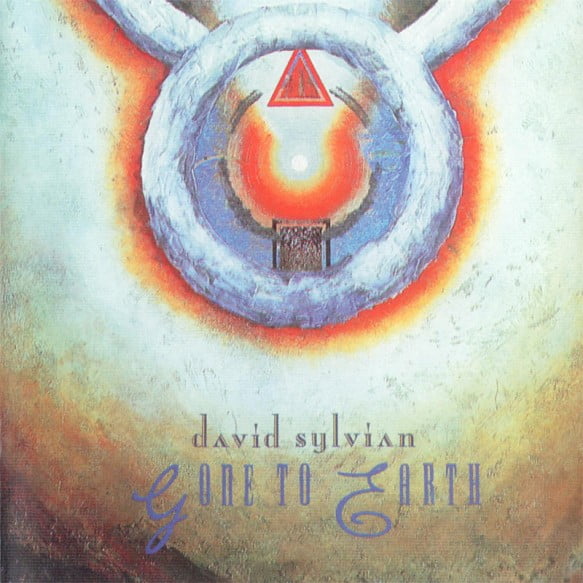
Many Sylvian fans had been thrown by the instrumental soundscapes of Alchemy… Where was the voice? For those still listening, Gone To Earth was a balm. More rock than pop, the first disc of this double album offered a suite of strong songs that were even more accessible than Brilliant Trees. Sylvian’s singing was better than ever, too; stronger, more assured.
His vocals were now the aural equivalent of Shirodhara – an Ayurvedic healing technique that involves having liquid – usually oil, milk, buttermilk or water – poured onto your forehead. The music ached and ebbed around the lyrical themes therein – trees, forests, mountains, rivers, valleys. Vistas both interior and exterior.
Gone To Earth was Sylvian’s most romantic album to date. This being Sylvian, doubt and self-reflection were never far away, as heard in the submarine glides and eddies of River Man and the churning, mistral maelstrom of the title track. Brother Jansen’s drums throughout are imperial; seemingly lighter than air on Taking The Veil and Thor’s hammer-heavy on Wave and Before The Bullfight.
Sylvian had the enviable privilege of writing the album with two guitarists in mind – Robert Fripp and Bill Nelson. Disc Two is purely instrumental; the sound of abandoned train stations and hummingbirds dreaming.
Read more: Japan’s Quiet Life – A retrospective
Read more: The Lowdown: Japan and David Sylvian
SECRETS OF THE BEEHIVE, 1987
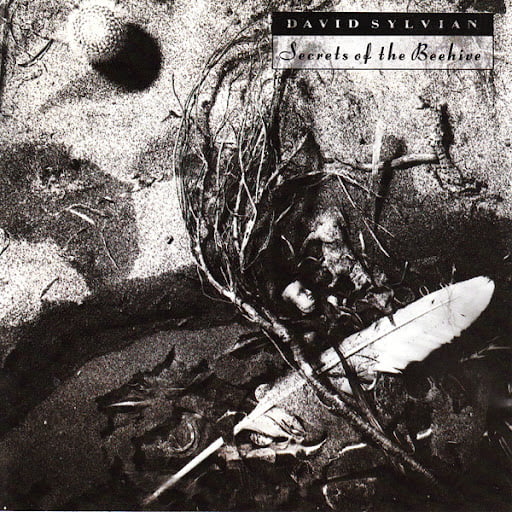
Sylvian and Scott Walker shared more than a few traits. Both were blessed with beautiful faces that obscured the true nature and depth of their personality and work – at least initially. Both grew up in public as pop stars then struggled to shed that initial image as they and their work matured.
This was the classic conundrum; the adolescent audience fell in love with the artist at a certain stage and wanted the artist to stay within that image for a lifetime.
Many Walker fans wanted him to remain the blond fallen angel of My Ship Is Comin’ In and Jackie. Many Sylvian fans wanted him preserved as the blond, perfectly made-up neurotic boy outsider of Quiet Life and Ghosts. With Secrets Of The Beehive, Sylvian shed both the remainders of that lingering audience and channelled some of the grandiosity of Walker’s string-laden, late-60s work.
Indeed, one song from the Secrets Of The Beehive sessions, Ride, had been written with Walker in mind and Orpheus shared a title with the song Walker had released some 20 years earlier.
With its predominately crepuscular, acoustic timbre – even the electronics seemed like real, as yet undiscovered instruments – Secrets Of The Beehive sounded unlike anything else released that year and as such remains a timeless classic. Sylvian was now an ‘album artist’ and the poor chart placing of the LP’s singles – the hymn-like Let The Happiness In and the sweeping, cinematic sea-spray of Orpheus – reflected this.
But this was something Sylvian was surely comfortable with; he loved the work of Nick Drake and Joni Mitchell, both consummate album artists themselves, and their influence runs through this record like a grain through wood.
Tellingly, Sylvian’s face was absent from the cover. Like Walker in the late 60s, Sylvian’s 80s trio of solo albums reflect the artist at his most prolific. “It’s just a batch of songs that sort of arrived and fell in my lap,” David has explained. “I recognised that there was a beauty to the material and it already felt to me like something I had heard before… It felt like a gift.”
DEAD BEES ON A CAKE, 1999
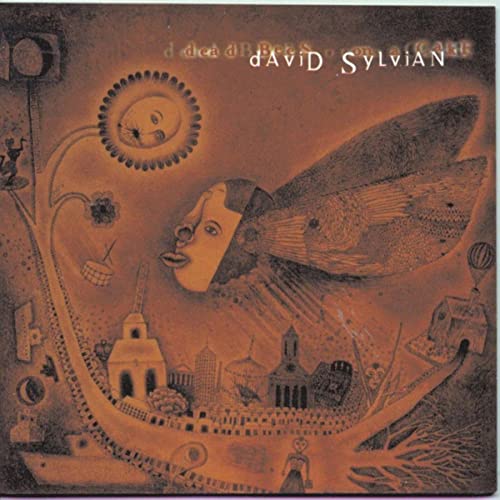
Sylvian had lived a lot in the 12 years between Secrets Of The Beehive and Dead Bees On A Cake. He’d endured various world tours, released albums in collaboration with Holger Czukay and Robert Fripp, and even revisited the one-time Japan line-up as Rain Tree Crow. The latter was the nail in the coffin for that particular group and shortly after falling out with Jansen, Barbieri and Karn (who would go onto form JBK), Sylvian had gotten married to singer-songwriter Ingrid Chavez, moved to America and had children.
He’d also begun exploring his long-held spiritual beliefs to the extent that at one point he considered giving up music. Dead Bees… attempted to embody and express many of these profound experiences and so was doomed to fail if only by design.
Originally envisaged as another double album, Virgin baulked at this and the resultant single disc is a somewhat incoherent collection of beautiful ballads (Wanderlust, Darkest Dreaming) and more fragmentary pieces (Dobro#1). The melted ‘trip-hop’ groove of lead single I Surrender is (seemingly) a paean to a new-found marital bliss and a fleeting peace of mind. It would be Sylvian’s final Top 40 UK hit to date.
The boyhood influences of Bowie, Eno and Ferry have been completely exorcised, although it’s possible to hear the patina of Tom Waits (Godman), Miles Davis (All Of My Mother’s Names) and jazz arranger Gil Evans (Midnight Sun) in some of the material.
Even Sylvian’s then guru, Shree Maa, appears, singing divinely on Praise. Ingrid Chavez also occasionally and sparingly contributes gossamer vocals. Yet the album has a troubling inconsistency that perhaps has its roots in the actual recording process.
Sylvian: “I just came up with so many problems with producing it. So many avenues just ended in a kind of a dead end. Using a great deal of new technology this time, a lot of files were lost along the way….” Dead Bees On A Cake would also be his final original album on Virgin. Far more satisfying is the 2018 double vinyl version; the additions of Cover Me With Flowers and The Scent Of Magnolia do much to make the album more cohesive.
Read more: Making Japan: Tin Drum
Read more: Japan – Gentlemen Take Polaroids
BLEMISH, 2003
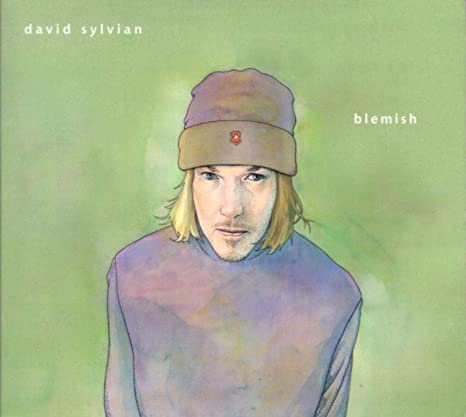
Released in 2003, Blemish was Sylvian’s emotional response to the end of his marriage, cast in sound. Sonically abrasive and uncompromising, it at least offered its author some respite. Sylvian: “It was very cathartic… obviously I was going through a breakup of a marriage and that was very painful, but as I got into the studio and shut the door, I would allow myself into the darkest recesses of my heart and my mind to uncover what was there…’
The album was improvised in Sylvian’s New Hampshire home studio and the lyrics are first drafts. “I worked on the album daily for six weeks, and each day I was more or less writing a track. I’d flesh it out over time, and at the end of each day I’d listen back to what I’d done and feel elated by what I heard. It felt very exciting.”
With its distorted electronics and traumatic tremolo timbre, Sylvian had in fact invented a new sound palette for himself. He was joined on some tracks by free-improv jazz legend Derek Bailey who contributed thorny guitar tracks which Sylvian improvised vocals and melodies over.
Austrian sound painter Christian Fennesz also applies some languid washes and glitches. There were softer hues, too; the bruised lullaby’s of Late Night Shopping and A Fire In The Forest offer some emotional relief. David Byrne was a fan. Blemish was also Sylvian’s first release after parting with Virgin in 2000.
WHEN LOUD WEATHER BUFFETED NAOSHIMA, 2007
Sylvian had long been interested in instrumental music. As far back as Japan’s second album, Obscure Alternatives, there was The Tenant; a drifting, somnolent piece. The Quiet Life sessions produced A Foreign Place and other instrumentals would surface throughout every Japan recording session hence.
As Sylvian explored this genre throughout his career, the results would increasingly drift into what could be described as ambient music rather than instrumental. This was most obviously evident in his solo career; in particular the Words With The Shamen EP, his mid-80s albums with Holger Czukay, and the second disc of Gone To Earth.
But his 1987 score for Kin, a dance piece by choreographer/dancer Gaby Agis, along with the music for documentary pieces on Alchemy…, were examples of Sylvian writing wordless music for a very particular function.
Whereas the instrumentals on Gone To Earth and Plight And Premonition (with Czukay) could easily furnish any listener’s room, by the early 90s Sylvian was increasingly involved with commissions. His first major work in this regard was for Ember Glance (1991), an eerie art project that haunted an abandoned warehouse in the Tokyo docks. Redemption, another Tokyo installation project with Robert Fripp, followed in 1994.
A useful compendium of Sylvian’s instrumental/ambient works, Camphor was his last release on Virgin in 2002. So, by the time …Naoshima was released in 2007, there could be no doubt as to Sylvian’s credentials in this field.
Originally commissioned as an installation piece by the Naoshima Fukutake Art Museum Foundation, as part of the Naoshima Standard 2 exhibition Sylvian composed a haunting collage of what sounds like field recordings. Wind, broken harmoniums, keening female vocals, birdsong… who would have thought on hearing Ghosts that it was the vocabulary of broken electronic harmonics on that track that Sylvian would end up exploring?
Read more: Richard Barbieri interview
MANAFON, 2009
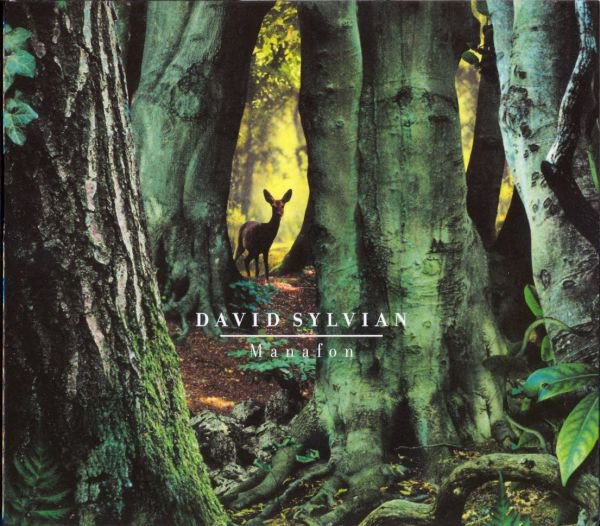
Manafon took its title from the name of a Welsh village that was home to poet/priest RS Thomas; an Anglican whose verse sometimes voiced doubt about his faith. Thus, the spectre of Thomas was the perfect creative foil and catalyst for where Sylvian now found himself. Various spiritual practices and explorations had been exhausted and there were faultlines appearing in his physical health.
Much of his one-time ‘pop’ audience were exhausted by his journeys into more esoteric music while simultaneously, Sylvian would never be fully accepted by the hardcore free improv audience and press, although the players in that faction were more welcoming.
In some ways, Sylvian was a man without a country and exhausted philosophically from asking questions he was no longer getting answers to. Thus, the work and persona of writers like Samuel Beckett and RS Thomas held an obvious attraction to him.
Sylvian: “Yes, the album certainly has elements of Samuel Beckett. Looking at the life of RS Thomas, he becomes something like a character in a Beckett work. It has that irony and humour, and a lost sense of purpose, if you will. I realised later how those aspects attracted me to the character of RS Thomas: that ironic dichotomy of a man of faith who questions that faith.”
Again, the material was improvised although the inclusion of other players in this seems to cloud the work. The music is seemingly rhythmless and chords and melodies hauntingly hinted at rather than stated. Sylvian’s brittle, bone dry vocals seem to sit on top of the music rather than with it.
Small Metal Gods is a promising opening track but from then on the vocal melodies employ a sameness that becomes as tiring as the keeling, keening music below
Manafon is perhaps closer to the form it takes its inspiration from – poetry and prose – than the music it aspires to. Perhaps if Sylvian had spoken the words rather than sang them, Manafon would have been more successful? “Manafon…” wrote Ian Penman in The Wire, “feels inert, half-realised: his vocals feel oddly clinical, detached, set in (s)tone… he never sounds like he was in the same time zone or mindset as anyone/everyone else.”
A VICTIM OF STARS 1982-2012
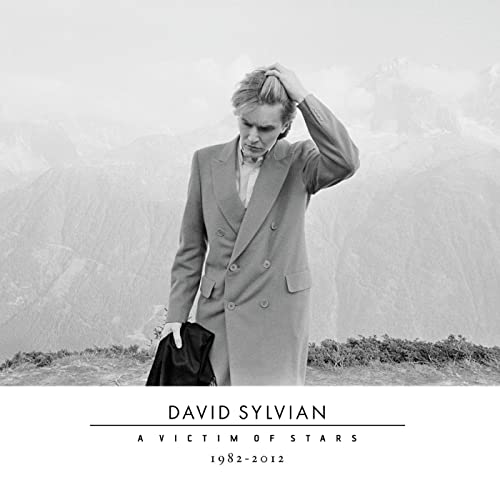
A fine overview of Sylvian’s vocal work spanning 30 years, the material within leans toward the songwriter at his most traditional if not quite poppiest. Sylvian had been, at heart, a writer of ballads with an increasing interest in deconstructing and even inverting the form. His voice was the glue that held it all together.
A Victim Of Stars compiles key tracks from every phase of this journey; from the almost bubblegum occidental pop of 1982’s Bamboo Music to the string-drenched chamber confessional of 2009’s Small Metal Gods. In between we get some bona fide classics; Ghosts, Forbidden Colours, Orpheus. We even gain a ‘new’ song; the monk-on-morphine sleepwalk of Where’s Your Gravity?.
And as we follow the chronological arc, Sylvian’s vocals seems to slowly evaporate into their base essence; the smoothness of his voice has become rough, the liquidity; parched. It’s compelling listening, the sound of a man ageing before our very ears. The net is cast wide – Sylvian’s pre- and post-Virgin work is all represented, yet surprisingly David himself wasn’t involved other than supplying the label with a choice of titles.
“It’s hard looking back,” he said. “It’s not something I enjoy. I really had very little to do with [A Victim Of Stars]. I don’t even know what the running order is.”
THERE IS A LIGHT THAT ENTERS HOUSES WITH NO OTHER HOUSE IN SIGHT, 2014
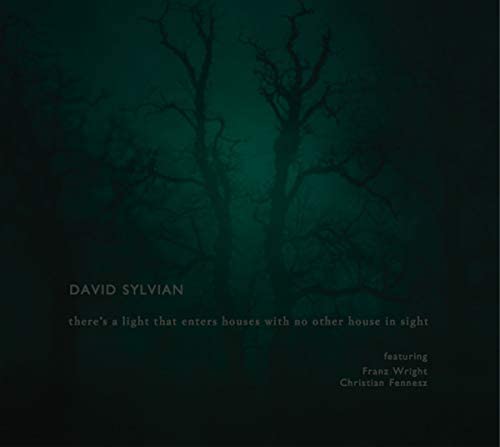
All art constantly aspires towards the condition of music,” reckoned the English essayist Walter Pater. With releases like There Is A Light… Sylvian seemed to be turning that maxim on its head; or at least sideways on. Where the singer’s one-time peers Nick Cave and Paul Weller, for example, were still writing and releasing what could be very much classified as songs, Sylvian had moved into another category altogether.
There Is A Light… saw him collaborating with the poet Franz Wright who at the time of recording was dying of cancer. Sylvian, already familiar with Wright’s work, explained the origin of this long-form composition: “On embracing the offer of a brief tour with friend and collaborator, Christian Fennesz, I came to the conclusion that it was better to find a focus for the work prior to touring than to attempt a form of free improvisation, not something I’ve personally explored.
“The starting point in my mind was Franz and [his book], Kindertotenwald. I was to meet Franz in his hometown of Waltham, Massachusetts, an hour or so from my own home at that time, and spent all too few hours in his company recording his readings. Franz, it has to be said, was gravely ill and stoically riding a considerable wave of heavy medication.
“That he took time out to make the recording was remarkable and it turned out to be uplifting for the both of us. Although Franz’s stamina was limited, we managed to get enough of the readings onto disc before our time was up.”
The shape of the music within is familiar to anyone who has followed Sylvian this far; the sound of heavy rain on piano, cables being plugged in and torn out, echoes of feedback, uncertain drones. Wright’s voice, however, is magnificent; instantly real and unselfconscious. The sound of a man with nothing left to lose and everything to give.
You can get a copy of Anthony Reynolds’ critically acclaimed biography of Japan here.
